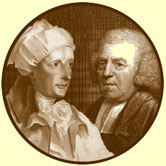| LACE HOME PAGE |
|
LOCAL LACE |
|
Lacemaking euqipment: pins and thread |
|
Pins Traditionally, the pins were made of brass and varied in length and thickness. The choice of pin size was dependent on the thickness of the thread.
Thread Thread was always a heavy charge on the lace maker, costing her about a tenth of the price of her lace. Until the 19th century fine linen was imported from the continent and there was a heavy duty imposed on it. Before the middle of the 18th century linen thread was always spun by hand. A lace dealer told the House of Commons in 1699 that £5 to £15 worth of lace thread made lace to the value of £100. In 1780 an importer calculated that the value of thread imported for the Buckinghamshire lace industry was £30,000 to £40,000. By 1803 the duty had risen to 5/- (shillings) in the £ (pound). Early in the 19th century fine cotton thread was introduced. This was sometimes called gassed thread because it had been passed through a gas flame to remove loose fibres. Linen, however made the most durable and best lace. Linen was sold in skeins, its fineness being indicated by numbers. Cotton was sold in packets containing "parcels", each of which consisted of a specified number of "slips" according to the fineness; thus 14 slip was extremely fine and 3 slip the coarsest in use. Gimp thread, a thicker, more lustrous yam, was used to outline the pattern in point ground lace and was also graded by number. |
| Images & text © 2009 The Cowper & Newton Museum (unless stated otherwise) | website by Jeremy Cooper at oliomedia |


